With hundreds of exhibitions and events vying for your attention in London during Frieze week, Apollo’s editors pick out the shows they don’t want to miss
An Evening of Performances, DRAF (2 October)
In the past 12 months the David Roberts Art Foundation (DRAF) closed its permanent gallery in Camden, hired new director and chief curator Fatoş Üstek and launched a programme of UK-wide collaborations with a range of other individuals and institutions. But one tradition has remained: the annual Evening of Performances during Frieze week, now in its 11th year. This year’s event will take place at the O2 Forum Kentish Town, with nine performances – all but one of which are new commissions – exploring the theme of intimacy. I’m especially intrigued by the sound of Fiona Banner’s ‘typographic catwalk’, to be presented under the name of her long-running imprint The Vanity Press; the performance will apparently be assigned its own ISBN. Tickets are free but sure to run out, so book soon.
‘Heidi Bucher’ at Parasol unit (until 9 December)
Other than a small show at The Approach in 2013, this is the first exhibition in the UK dedicated to the relatively unknown Swiss artist Heidi Bucher (1926–93). The focus is on what Bucher called her ‘Häutungen’ (skinnings), latex casts of various domestic spaces and objects made in the final two decades of her life. Comparisons are bound to be drawn with contemporary figures such as Do Ho Suh or Rachel Whiteread, but the exhibition offers tantalising hints of the diversity of Bucher’s wider oeuvre, such as in a series of sculptural assemblages, and films exploring the performative dimension of her casting process.
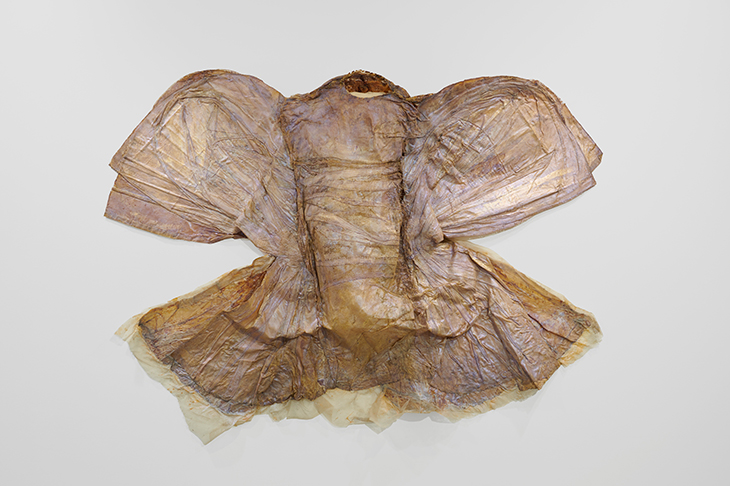
Installation view of ‘Heidi Bucher’ at Parasol unit, London, 2018. Photo: Benjamin Westoby. Courtesy Parasol unit foundation for contemporary art
‘Hannah Wilke’ at Alison Jacques (until 21 December)
The late American artist Hannah Wilke is particularly known for her feminist subversion of minimalism, in which semi-abstract sculptures that resemble female genitalia are arranged in grid-like configurations. One of the largest examples of these, an installation from 1974–77 consisting of 103 terracotta forms painted a dusty pink, will undoubtedly be the centrepiece of this exhibition. But I’m also looking forward to seeing Wilke’s vividly coloured paintings and drawings from the early 1960s, which have apparently not been exhibited since her death in 1993.
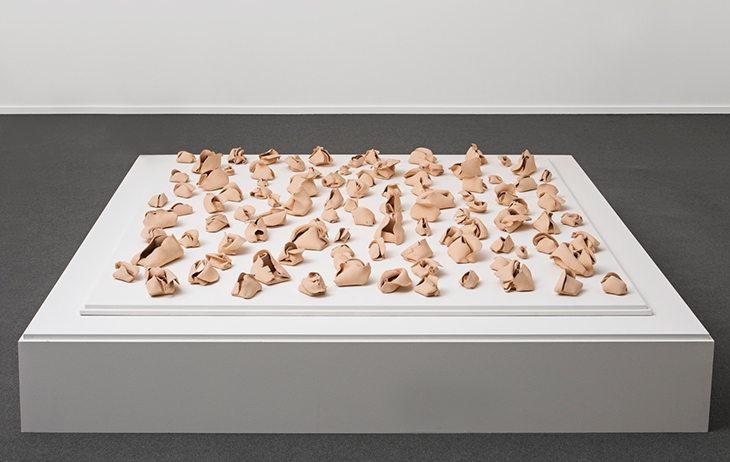
Untitled (1974–77), Hannah Wilke. Courtesy Alison Jacques Gallery, London and Hannah Wilke Collection and Archive, Los Angeles; © Marsie, Emanuelle, Damon and Andrew Scharlatt, Hannah Wilke Collection & Archive, Los Angeles. Licensed by VAGA, New York, NY/DACS, London
‘Anni Albers. Connections: Prints 1963–1984’ at Alan Cristea (1 October–10 November)
With a major Anni Albers survey opening at Tate Modern on 11 October, it’s unsurprising that Alan Cristea is now mounting this show of the great modernist artist’s prints. Albers, who trained in weaving at the Bauhaus (because women were discouraged from attending the painting workshops) and in 1965 published the seminal book On Weaving, is best known for her textile work – but by 1970 she had abandoned the loom for printmaking. Intricate geometric patterns, as well as more fluid linear forms that resemble tangles of thread, suggest an interesting continuity between her work in the two mediums.
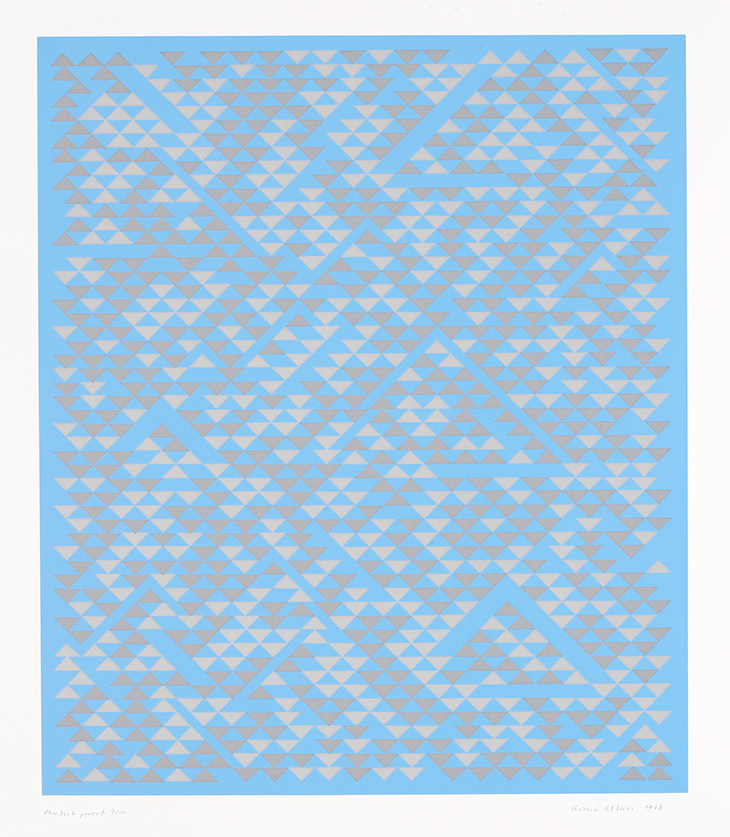
A (1968), Anni Albers. Courtesy Josef and Anni Albers Foundation and Alan Cristea Gallery, London
Unlimited access from just $16 every 3 months
Subscribe to get unlimited and exclusive access to the top art stories, interviews and exhibition reviews.

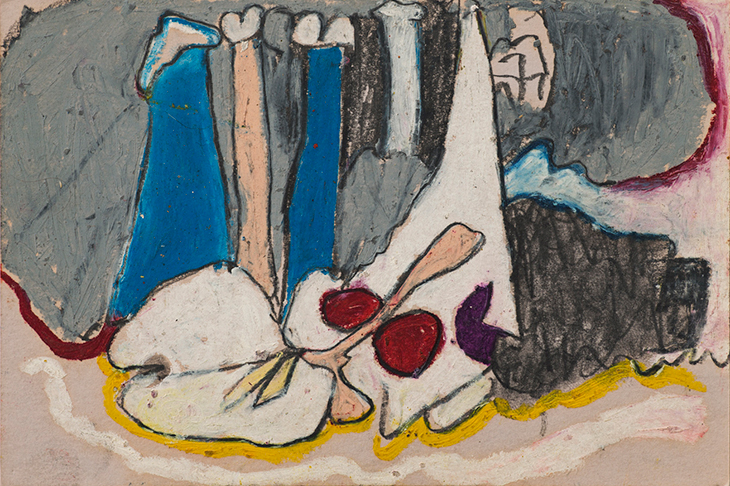
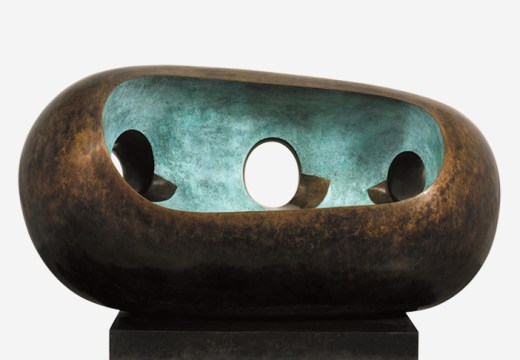
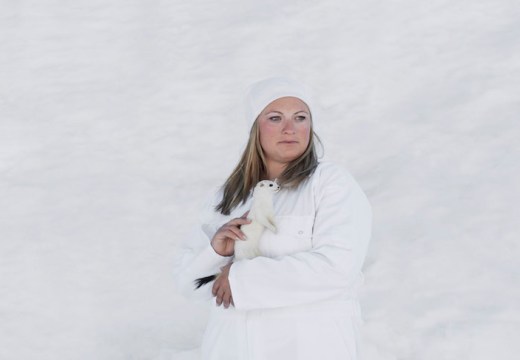
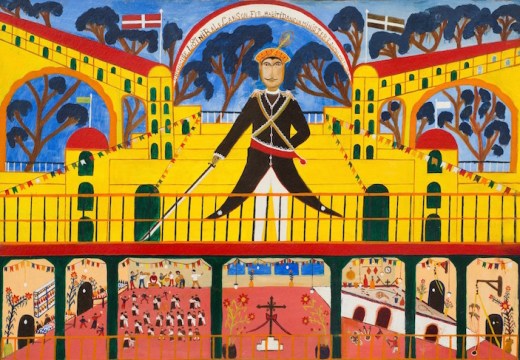









![Masterpiece [Re]discovery 2022. Photo: Ben Fisher Photography, courtesy of Masterpiece London](http://www.apollo-magazine.com/wp-content/uploads/2022/07/MPL2022_4263.jpg)
It’s time for the government of London to return to its rightful home